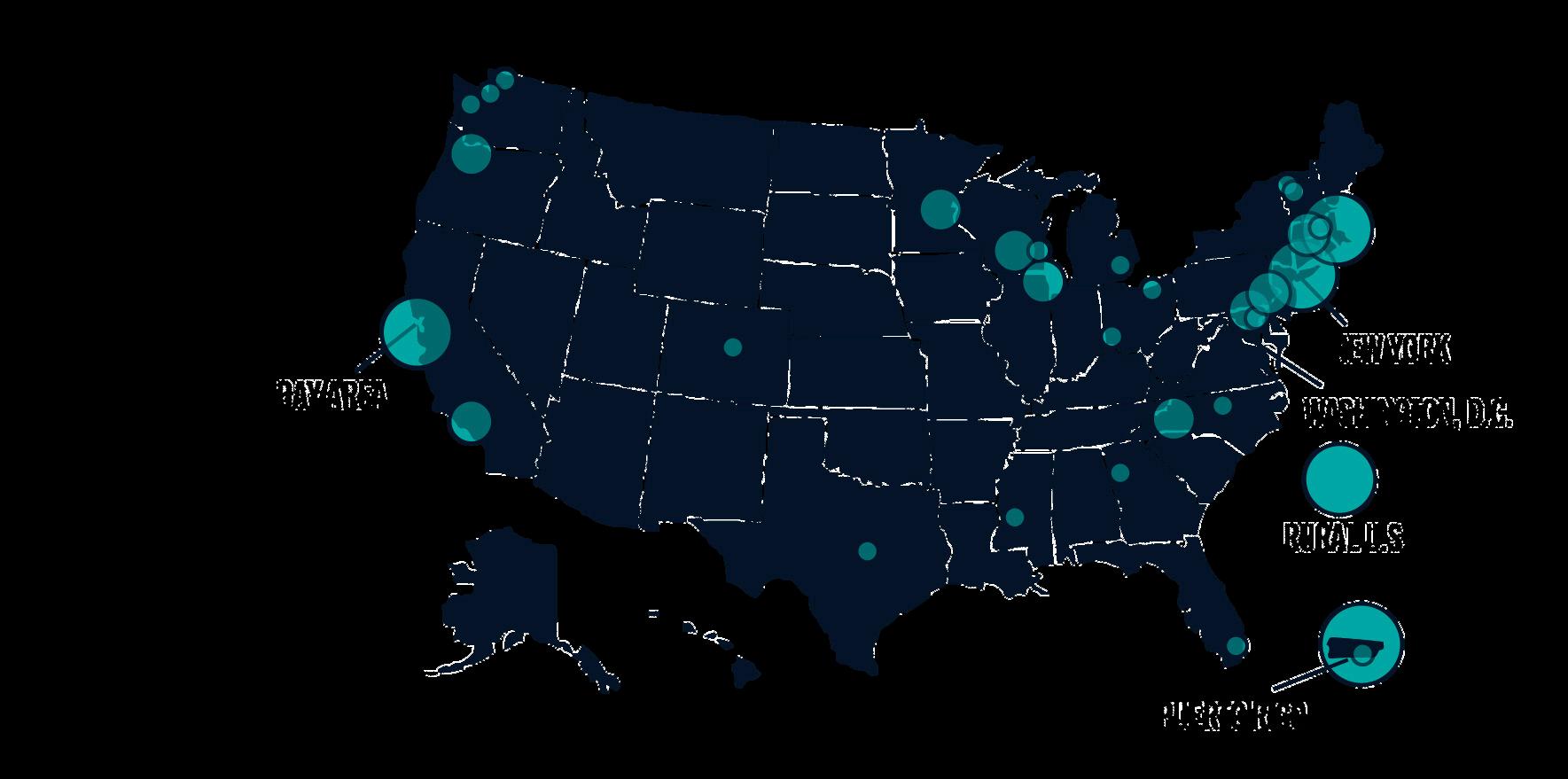Worker Cooperatives & Democratic Workplaces in the U.S.




Worker Cooperatives & Democratic Workplaces in the U.S.




751 Known Worker Cooperatives
Worker cooperatives have grown by more than 20% in the past two years and tripled over the past decade. The 751 worker cooperatives and democratic workplaces referenced here were identified during the 2023 Economic Census We estimate there are closer to 1,300 worker cooperatives, many of which are startups.


Worker cooperatives and democratic workplaces have experienced concentrated growth over the past decade. The increasingly popular business form is providing wealth-building opportunities, safer workplaces, living wages, and agency for workers across the U.S. The data presented here represents results of the 2023 Economic Census of Worker Cooperatives and Democratic Workplaces, conducted by Democracy at Work Institute and the U.S. Federation of Worker Cooperatives. This year’s data completes a decade of research on worker-owned businesses. The business-specific data presented here represents survey responses from 172 firms.

Cooperatives are businesses designed to provide direct benefit to their members. 1 in 5 reported having multiple member classes, indicating innovation within the field, meeting the needs of workers and their communities to include classes such as consumerswhich broaden the stakeholders to a wider community - and investors - which allow for additional financing.
Worker cooperatives and democratic workplaces prioritize the reduction of internal inequality over other compensation goals While pay ratio in cooperatives is 1 : 1.45, the pay ratio in large US corporations averages 1 : 344. This is according to the Economic Policy Institute (2023).
Business conversions, also referred to as ownership transitions, continue to grow in prevalence. While our previous census reported between 10% - 20% of respondents transitioned to a worker cooperative model, nearly a third of this year’s respondents were conversions.

Worker cooperatives and democratic workplaces use a variety of legal forms upon incorporation, but the limited liability company is by far the most common The most common legal forms used by conventional firms are sole proprietorship, partnership, corporation and s-corporation
The tops 5 legal forms used by co-ops are:
- 41.82%
Cooperative - 30.30% C-corp - 10.30%
Cooperative Corporation - 4.24% S-corp - 3.64%
Businesses exist in an array of industries and the rate of startups remains steady. As shown by the growing percentage of ownership transitions and the large number of cooperatives started in the 2010s, the number of older firms is growing, potentially suggesting the model’s longevity and an increase in business support services.
Firm Revenue - $607,081